Don't wanna be here? Send us removal request.
Text
How Do Facebook Ads Work for Generating Revenue?

Facebook ads have become one of the most effective tools for businesses to generate revenue, and here’s how:
Targeting the Right Audience: Facebook allows businesses to target specific groups based on demographics, interests, behaviors, and even previous interactions. This means ads are shown to potential customers who are more likely to engage with your product or service, leading to higher conversion rates.
Cost-Effective Advertising: Facebook ads can fit any budget. You don’t need a massive advertising budget to reach thousands of potential customers. With a well-planned ad strategy, even small businesses can generate significant returns on a modest investment.
Multiple Ad Formats: Facebook offers various ad formats (carousel, video, lead ads, etc.) that cater to different business needs. This flexibility allows businesses to create ads that grab attention, engage customers, and drive sales.
Retargeting: Facebook ads have a powerful retargeting feature, which means you can show ads to users who have visited your website or interacted with your content before. This significantly increases the chances of conversion as these users are already familiar with your brand.
Measurable Results: One of the key advantages is that you can measure the performance of your ads in real-time. You can track clicks, conversions, and overall ROI, allowing you to optimize your campaigns to generate maximum revenue.
Boosting Brand Awareness: Facebook ads also help build brand recognition. Over time, consistent exposure can build trust, making customers more likely to purchase from you in the future.
At Vidya Sarthi Digital Marketing Institute in Faridabad, we teach businesses how to leverage Facebook ads effectively. By following these principles, companies can drive significant revenue and growth. Whether you are just starting or looking to scale your business, Facebook ads can be a game-changer if used correctly!
0 notes
Text
How Do Facebook Ads Generate Income for Businesses?

In the digital age, advertising is not just about getting noticed; it's about generating real revenue. Facebook ads have become a powerful tool for businesses looking to convert online presence into profit. But how exactly do Facebook ads contribute to a company's bottom line? Let’s break it down.
1. Targeted Advertising Reaches the Right Audience
One of the primary ways Facebook ads generate income is through their highly targeted nature. Facebook allows businesses to target ads based on demographics, interests, behavior, and even past interactions with your brand. This ensures that your ads are seen by those most likely to be interested in your products or services, increasing the chances of conversion.
Example: A local gym can target ads to people within a 10-mile radius who have shown interest in fitness, ensuring their ad budget is spent on potential customers who are more likely to sign up for a membership.
2. Cost-Effective Marketing
Facebook ads can be much more cost-effective than traditional advertising methods. Businesses can set their own budgets and adjust them as needed. The pay-per-click (PPC) or pay-per-impression (PPI) models mean you only pay when someone interacts with your ad, ensuring that your marketing dollars are spent efficiently.
Example: A small online retailer can run ads with a limited budget and still reach thousands of potential customers, driving traffic to their website and generating sales without overspending.
3. Remarketing to Boost Conversions
Remarketing is another powerful feature of Facebook ads. It allows businesses to re-engage users who have previously interacted with their website or ads. By reminding these users of the products or services they showed interest in, businesses can encourage them to return and complete their purchase.
Example: An e-commerce store can use Facebook remarketing ads to show customers the items they left in their cart, prompting them to finalize the purchase and increase sales.
4. Driving Website Traffic
Facebook ads are an effective way to drive traffic to your website. Whether you're promoting a new product, a special offer, or just raising brand awareness, getting more people to visit your site is the first step towards generating income.
Example: A software company can use Facebook ads to drive users to a landing page where they can sign up for a free trial, leading to potential conversions and long-term customers.
5. Lead Generation
Facebook ads can also be used to collect leads, which are potential customers who have shown interest in your business. Through lead generation forms, businesses can capture contact information directly from the ad, which can then be used for follow-up marketing efforts.
Example: A real estate agency can use Facebook ads to offer a free guide to buying a home in exchange for users' email addresses, which can later be used to send targeted offers and updates.
6. Enhancing Brand Awareness
While direct sales are important, building brand awareness is a crucial step in long-term income generation. Facebook ads can help businesses increase their visibility and establish a strong online presence, making potential customers more likely to think of them when they're ready to make a purchase.
Example: A new clothing brand can run Facebook ads to showcase its latest collection, ensuring that when customers are in the market for new clothes, the brand is top of mind.
7. Promoting Special Offers and Discounts
Special offers, discounts, and promotions can drive immediate sales, and Facebook ads are an excellent way to get the word out. By creating a sense of urgency, businesses can encourage quick purchases, boosting revenue.
Example: A restaurant can use Facebook ads to promote a limited-time discount on a popular dish, driving traffic to the restaurant and increasing sales during slow periods.
Conclusion
Facebook ads are a versatile and effective tool for generating income. By reaching the right audience, controlling costs, driving traffic, and enhancing brand awareness, businesses can see a significant return on investment. Whether you’re a small business or a large enterprise, incorporating Facebook ads into your marketing strategy can lead to measurable growth and profitability.
Call to Action: Ready to harness the power of Facebook ads for your business? Start your journey with Vidya Sarthi Digital Marketing Institute in Faridabad. Our expert-led courses will equip you with the skills needed to create and manage successful Facebook ad campaigns. Enroll today and take the first step toward boosting your business income!
0 notes
Text
Can Google Analytics Track Clicks from Facebook Ads?

es, Google Analytics can track clicks from Facebook ads. Here’s how:
UTM Parameters: By adding UTM parameters (tracking codes) to your Facebook ad URLs, you can monitor traffic from those ads in Google Analytics. These codes help identify the source, medium, and campaign.
Campaign Reporting: Once set up, you can view your Facebook ad traffic under the "Acquisition" section in Google Analytics. It will tell you how many users came from Facebook, what they did on your site, and more.
Goals and Conversions: You can also set up goals in Google Analytics to track specific actions (like purchases or sign-ups) that users from Facebook ads take on your website.
This way, Google Analytics helps you measure the performance of your Facebook ads and optimize them for better results.
0 notes
Text
What is the maximum daily budget for Google AdWords' pay-per-click (PPC) advertising

The great thing about Google AdWords is that there is no "maximum" daily budget set in stone. You can start with as little or as much as you're comfortable with, depending on your goals. Google Ads allows you to set your daily budget, which can be adjusted based on your campaign performance.
However, keep in mind that the higher your daily budget, the more competitive your campaigns can be. If you're working with a smaller budget, that's okay too! It's all about finding the right balance between your spending and the results you want to achieve.
Tip from Vidya Sarthi Digital Marketing Institute, Faridabad: Whether you're just starting or looking to fine-tune your campaigns, it's crucial to monitor your ads regularly and adjust your budget accordingly to get the best return on investment (ROI).
0 notes
Text
What is a Good Reach for Facebook Ads?

A good reach for Facebook ads depends on several factors like your target audience, ad budget, and campaign goals. However, generally speaking, a good reach means that your ad is seen by a significant portion of your target audience, giving your campaign the chance to perform well.
For smaller businesses, reaching around 1,000-10,000 people might be considered good, while larger brands may aim for tens or hundreds of thousands. The key is ensuring your ad is shown to the right people—those who are most likely to engage with your product or service. It's not just about reaching a large number of people, but the right people.
A good reach for Facebook ads depends on your specific goals, budget, and audience. For some, reaching a few thousand highly targeted people could be great. For others, expanding brand awareness to hundreds of thousands of users might be the objective. At Vidyasarthi Digital Marketing Institute in South Delhi, we emphasize that reaching the right people, rather than just a large number, is key to running successful campaigns.
0 notes
Text
How do you set your Google My Business profile and achieve success in Google Ads?
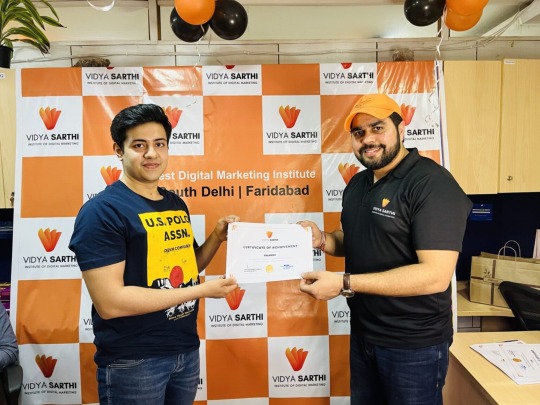
Setting up a Google My Business (GMB) profile and achieving success in Google Ads can significantly boost your online visibility and drive more customers to your business. Here's how you can do it:
Claim Your Google My Business Profile: Start by claiming your GMB profile if you haven't already. Go to the Google My Business website and follow the prompts to verify your business. This will allow you to manage your business information, such as your address, phone number, website, and hours of operation.
Complete Your Profile: Make sure your GMB profile is fully completed. Add high-quality photos, write a compelling business description, and choose the correct business categories. The more information you provide, the easier it is for potential customers to find and trust your business.
Engage with Reviews: Encourage your customers to leave reviews on your GMB profile and make sure to respond to them—both positive and negative. This not only improves your reputation but also shows that you value customer feedback.
Use Google Ads Effectively: To succeed with Google Ads, start by setting clear goals. Whether you want to increase website traffic, generate leads, or boost sales, your goals will guide your ad strategy. Choose the right keywords that potential customers might use to find your business and write compelling ad copy that stands out.
Optimize Your Ads: Regularly monitor the performance of your ads and make necessary adjustments. Use A/B testing to find out what works best and focus on improving your Quality Score, which can lower your cost per click and increase your ad ranking.
Leverage Local SEO: For local businesses, optimizing your GMB profile for local SEO is crucial. Make sure your business information is consistent across all online platforms, and use local keywords in your GMB description and Google Ads to attract local customers.
By following these steps, you can effectively manage your Google My Business profile and create successful Google Ads campaigns that drive results. At Vidya Sarthi Digital Marketing Institute in faridabad, we guide you through every step, ensuring you achieve the best outcomes for your business.
4o
0 notes
Text
Vidya Sarthi Institute of Digital Marketing in Faridabad offers a comprehensive digital marketing course designed to equip students with essential skills for success in the online landscape. With over 26,320 hours of training experience and more than 6,700 students trained, the institute is recognized for its high-quality education and personalized learning approach.
Course Overview
The digital marketing course spans four months and covers a wide range of topics, including:
Search Engine Optimization (SEO)
Pay-Per-Click (PPC) Advertising
Social Media Marketing
Email Marketing
Content Strategy
Each module is crafted to provide actionable insights, ensuring that students can apply what they learn in real-world scenarios. The curriculum is led by industry experts, fostering an environment of hands-on learning through practical exercises and case studies.
Unique Features
Placement Assurance: The institute guarantees job placements in writing, which is a significant draw for many students.
Small Class Sizes: This allows for personalized attention, enabling students to receive guidance tailored to their individual learning needs.
Free Trial Classes: Prospective students can book one-week free trial classes to determine if digital marketing is the right path for them.
Interest-Free EMI Options: Flexible payment plans are available, making it easier for students to manage their tuition fees.
Ideal Candidates
The course is suitable for a diverse range of individuals, including:
Business Owners looking to enhance their online presence.
Students seeking to acquire in-demand skills for better career prospects.
Homemakers interested in freelance opportunities.
Working Professionals aiming to upskill or switch careers.
Location and Accessibility
Located in Sector 31, Faridabad, the institute is easily accessible, being just 100 meters from Mewala Maharajpur Metro Station and 4 kilometers from the Delhi Badarpur border. This central location provides ample job opportunities in nearby regions like Delhi, Noida, and Gurgaon.
Conclusion
If you're looking to kickstart your career in digital marketing, Vidya Sarthi Institute offers a robust program that prepares you for the competitive digital landscape. With a focus on practical learning and job placement, it's an excellent choice for anyone eager to succeed in this dynamic field. Register for your free trial today and take the first step toward becoming a digital marketing professional!
0 notes
Text
How do your competitors’ Facebook ads grow your business?
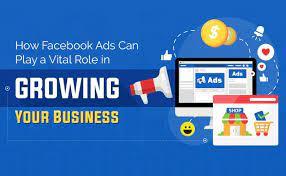
Believe it or not, your competitors’ Facebook ads can actually be a goldmine for your own business growth. Here’s how:
Learning What Works: By studying your competitors’ ads, you can see what kind of content, images, and messaging resonate with your shared audience. This can give you ideas to improve your own ads and make them more effective.
Identifying Gaps: Competitors' ads can highlight areas they’re not addressing well or at all. This gives you a chance to fill those gaps with your own unique offers or messaging, making your ads stand out.
Understanding Trends: Keeping an eye on competitors helps you stay up-to-date with the latest trends in your industry. You can see what new strategies or techniques they’re using and adapt them for your own campaigns.
Benchmarking Performance: Competitors’ ads can serve as a benchmark for your own ad performance. If you notice their ads getting a lot of engagement, it might be worth analyzing what they’re doing right and how you can apply similar tactics.
Targeting Insights: Sometimes, your competitors target segments of the market you hadn’t considered. Observing their ads can provide insights into new audiences you might want to reach out to.
Sparking Creativity: Seeing a variety of ads can spark new ideas and creativity for your own campaigns. It can inspire you to try different formats, headlines, or approaches that you hadn’t thought of before.
By keeping an eye on your competitors' Facebook ads, you can gather valuable insights and inspiration to refine your own advertising strategy with the help of Vidya Sarthi Digital Marketing Institute in Faridabad, ultimately driving better results for your business.
0 notes
Text
What are the pros and cons of using Google Ads vs. Facebook Ads
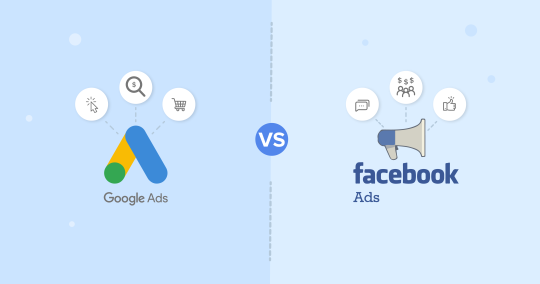
When considering Google Ads versus Facebook Ads, it's important to weigh the pros and cons of each platform to determine which aligns best with your marketing goals. Here’s a breakdown:
Google Ads Pros:
Intent-Based Targeting: Google Ads targets users actively searching for specific products or services, making it ideal for capturing high-intent traffic.
Wide Reach: With Google’s extensive network, your ads can appear on search results, YouTube, and millions of partner websites.
Flexible Ad Formats: Google offers various ad formats, including text, display, video, and shopping ads, providing versatility in how you reach your audience.
Detailed Analytics: Google Ads provides comprehensive analytics and reporting tools, allowing for precise tracking and optimization of campaigns.
Google Ads Cons:
Higher Costs: Keywords in competitive industries can be expensive, leading to high cost-per-click (CPC) rates.
Complexity: Setting up and managing Google Ads campaigns can be complex and time-consuming, especially for beginners.
Learning Curve: The platform’s detailed features and options can be overwhelming for new users, requiring a steep learning curve.
Facebook Ads Pros:
Advanced Targeting: Facebook’s detailed targeting options, including demographics, interests, and behaviors, allow for highly specific audience targeting.
Cost-Effective: Generally, Facebook Ads can be more affordable compared to Google Ads, especially for brand awareness and engagement campaigns.
Engagement: Facebook Ads can foster higher engagement rates with interactive ad formats like video, carousel, and lead ads.
Social Proof: Ads on Facebook can leverage social proof, showing likes, comments, and shares to enhance credibility and trust.
Facebook Ads Cons:
Lower Intent: Users on Facebook are not necessarily looking for products or services, which can result in lower intent traffic compared to Google Ads.
Ad Fatigue: Frequent exposure to the same ads can lead to ad fatigue, requiring constant creative refreshes.
Privacy Concerns: Changes in privacy policies and tracking limitations, especially with iOS updates, can affect ad performance and targeting accuracy.
Choosing between Google Ads and Facebook Ads depends on your specific business goals. If you aim to capture high-intent traffic and have a flexible budget, Google Ads might be the way to go. On the other hand, if you want to build brand awareness and leverage detailed audience targeting at a potentially lower cost, Facebook Ads could be more suitable. Ideally, a balanced approach utilizing both platforms can provide the best results.
For those looking to enhance their digital marketing skills and learn more about these platforms, consider enrolling in Vidya Sarthi, digital marketing course in South Delhi. This course can provide you with the knowledge and expertise to effectively utilize both Google Ads and Facebook Ads, helping you make informed decisions for your marketing strategies.
0 notes
Text
Why is the Cost Per Click So Expensive on Facebook Ads?

Facebook Ads have become a go-to tool for businesses looking to reach their target audiences. However, many have noticed that the cost per click (CPC) on these ads has been steadily rising. Let's break down why this is happening in simple terms.
More Advertisers = Higher Costs
One of the main reasons for the higher CPC is the number of businesses now using Facebook Ads. As more companies compete for the same ad space, the price naturally goes up. Think of it like an auction: the more bidders there are, the higher the final price.
Better Targeting Means Higher Bids
Facebook lets advertisers target very specific groups of people based on demographics, interests, and behaviors. While this is great for reaching the right audience, it also means advertisers are willing to pay more for these highly targeted ads. The competition for these specific segments drives up the cost.
Changes in Facebook’s Algorithm
Facebook regularly updates its algorithm to improve user experience and ad performance. While these changes are generally positive, they can also cause fluctuations in CPC. For example, if Facebook decides to prioritize certain types of ads, more advertisers will compete for those spots, increasing the cost.
Importance of Ad Quality
Facebook rates ads based on their relevance and quality. High-quality ads that engage users tend to be shown more often and cost less. On the flip side, ads with lower scores are more expensive to run. This encourages advertisers to invest more in creating engaging content, which can drive up costs.
Seasonal and Market Trends
The cost of Facebook ads can also be affected by seasonal trends and market conditions. During busy times like holidays or major sales events, more businesses are advertising, which drives up prices. Similarly, changes in the economy or consumer behavior can impact ad costs.
Ad Fatigue
When people see the same ad too many times, they stop engaging with it. This is called ad fatigue. To keep ads fresh and engaging, businesses need to regularly update their content, which can be expensive and drive up CPC.
How to Manage High CPC
Despite rising costs, there are ways to manage and even reduce your CPC on Facebook:
Refine Your Targeting: Continuously adjust your audience targeting to ensure you're reaching the most relevant people. Use Facebook's tools to find new audiences similar to your existing customers.
Improve Ad Quality: Focus on creating ads that are visually appealing and have a clear message. High-quality ads tend to perform better and cost less.
Monitor and Adjust: Keep an eye on your ad performance and be ready to make changes. Experiment with different ad formats, placements, and bidding strategies to find what works best.
Use Organic Reach: Combine your paid ads with organic content strategies. Building a strong organic presence can help reduce your reliance on paid ads.
Budget Wisely: Plan your budget carefully, balancing between immediate goals and long-term brand building. Be mindful of spending, especially during peak advertising periods.
In summary, the rise in Facebook ad costs is due to increased competition, better targeting options, algorithm changes, ad quality scores, seasonal trends, and ad fatigue. By understanding these factors and implementing smart strategies, businesses, including those like Vidya Sarthi Digital Marketing Institute in South Delhi, can navigate these challenges and make the most of their advertising budgets.
0 notes
Text
What are the benefits of using both Facebook Ads and Google Ads simultaneously for business advertising campaigns, even though they have similar audience targeting capabilities?
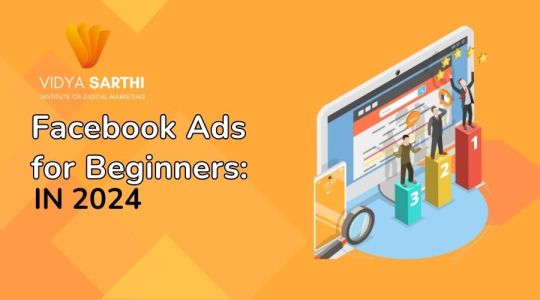
Using both Facebook Ads and Google Ads in your business advertising campaigns can offer numerous advantages, even though they have similar audience targeting capabilities. By harnessing the strengths of both platforms, businesses can enhance their reach, engagement, and conversions. Here are the key benefits of using Facebook Ads and Google Ads together:
Diversified Reach: Facebook Ads are great for reaching users based on demographics, interests, and behaviors, while Google Ads excel at targeting users actively searching for products or services.
Enhanced Brand Visibility:Running ads on both Facebook and Google increases brand visibility and awareness. Facebook Ads help build brand affinity and engage users on social media, while Google Ads capture users' attention when they are searching for related products or services.
Improved Re targeting Capabilities:Using both platforms for re targeting allows businesses to create a cohesive re marketing strategy that targets users across different touch points and stages of the customer journey, ultimately boosting conversion rates.
Comprehensive Data Insights: Facebook and Google provide robust analytics and data insights that help businesses track ad performance and optimize campaigns in real-time. Running ads on both platforms simultaneously allows businesses to gather extensive data on user behavior, preferences, and engagement metrics, enabling them to make informed decisions and maximize ROI.
Synergistic Marketing Strategy: Integrating Facebook Ads and Google Ads into a cohesive marketing strategy creates synergy between the two platforms. Businesses can leverage the strengths of each platform to support different marketing objectives, such as brand awareness, lead generation, or conversions.
using both Facebook Ads and Google Ads in business advertising campaigns offers a range of benefits that can enhance online visibility, engagement, and conversion rates. By leveraging the unique strengths of each platform and integrating them into a cohesive marketing strategy, businesses can reach a broader audience, optimize targeting, and drive better results for their advertising campaigns.
0 notes
Text

Digital Marketing vs. Traditional Marketing: Understanding the Differences
In today's rapidly evolving business landscape, marketing has become a critical component for success. The debate between digital marketing and traditional marketing is ongoing, with each approach having its own set of advantages and disadvantages. Understanding the differences between these two marketing strategies can help businesses make informed decisions about where to allocate their resources. What is Traditional Marketing? Traditional marketing refers to conventional methods of advertising and promotion that have been used for decades. This includes: Print Advertising: Newspapers, magazines, brochures, and flyers. Broadcast Advertising:Television and radio commercials. Direct Mail: Catalogs, postcards, and newsletters sent directly to consumers. Outdoor Advertising: Billboards, banners, and posters. Telemarketing: Direct phone calls to potential customers. These methods have been tried and tested over time, and they continue to be effective in reaching certain demographics, especially older generations who may not be as active online. What is Digital Marketing? Digital marketing, on the other hand, leverages the internet and digital technologies to promote products and services. Key components include: Search Engine Optimization (SEO): Improving a website’s visibility on search engines like Google. Content Marketing: Creating valuable content to attract and engage an audience. Social Media Marketing: Using platforms like Facebook, Instagram, Twitter, and LinkedIn to reach potential customers. Email Marketing: Sending targeted emails to nurture leads and retain customers. Pay-Per-Click (PPC) Advertising: Paying for ads that appear on search engines and other websites. Affiliate Marketing: Partnering with other businesses or influencers to promote products. Digital marketing offers a dynamic and interactive way to connect with a global audience. Key Differences Between Digital and Traditional Marketing
Reach and Accessibility Traditional Marketing: Often limited to a specific geographical area and can be costly to expand. Digital Marketing: Has a global reach, allowing businesses to connect with audiences anywhere in the world.
Cost Traditional Marketing: Generally requires a significant investment, especially for TV and radio ads. Digital Marketing: Often more cost-effective, with various budget-friendly options available.
Targeting and Personalization Traditional Marketing: Offers limited targeting options and personalization. Digital Marketing: Allows for precise targeting and highly personalized marketing messages based on consumer behavior and preferences.
Measurability and Analytics Traditional Marketing: Difficult to measure ROI and effectiveness accurately. Digital Marketing: Provides detailed analytics and metrics, making it easier to track performance and optimize strategies.
Interactivity Traditional Marketing: Typically a one-way communication channel. Digital Marketing: Facilitates two-way interactions, enabling businesses to engage directly with their audience.
Adaptability Traditional Marketing: Changes can be time-consuming and costly. Digital Marketing: Highly adaptable and allows for quick modifications based on real-time feedback. Choosing the Right Strategy The choice between digital and traditional marketing depends on various factors, including the target audience, budget, and business goals. Many successful companies use a combination of both, leveraging the strengths of each to maximize their reach and impact. When to Use Traditional Marketing: Targeting an older demographic. Promoting local events or businesses. Building brand recognition through tangible media. When to Use Digital Marketing Reaching a global audience. Engaging with younger, tech-savvy consumers. Utilizing data and analytics to refine marketing efforts. Conclusion Both digital and traditional marketing have their place in a comprehensive marketing strategy. Understanding the unique benefits and limitations of each can help businesses effectively reach their target audience and achieve their marketing objectives. By integrating both approaches, companies can create a balanced strategy that leverages the power of modern technology while still utilizing the proven methods of traditional marketing.
0 notes
Text
Welcome to the dynamic world of e-commerce, where the right marketing strategies can propel your business to new heights. At Vidya Sarthi Digital Marketing Institute, we are committed to equipping you with the knowledge and skills needed to succeed in the competitive online marketplace. In this comprehensive guide, we'll explore the most effective e-commerce marketing strategies that will help you attract, engage, and convert customers, ensuring your online store thrives. Join us to learn and master these strategies, and take your e-commerce business to the next level
0 notes
Text
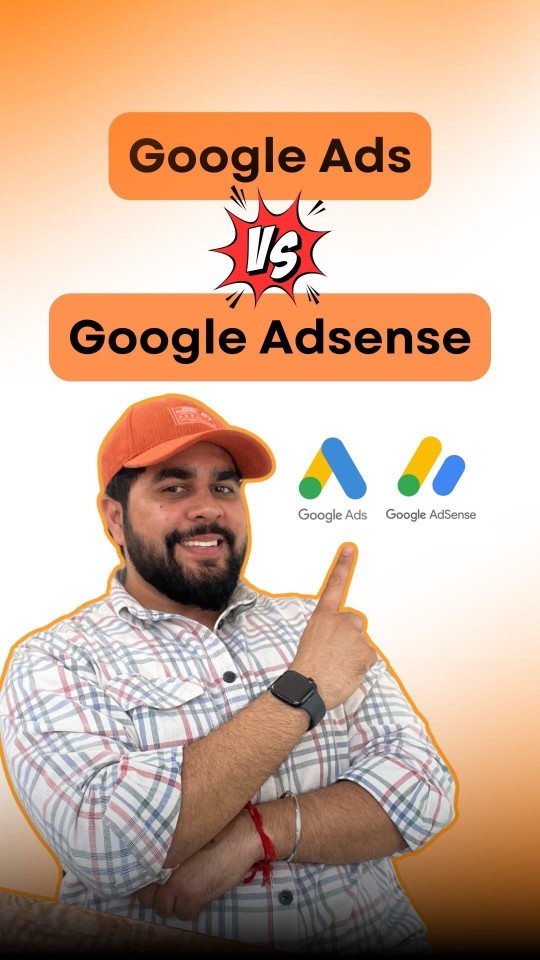
Unlock your potential with Vidya Sarthi's Digital Marketing Course! Designed for beginners and professionals alike, our comprehensive program covers SEO, social media marketing, content creation, and more. Gain hands-on experience with real-world projects and learn from industry experts. Whether you want to boost your career or start your own business, our course equips you with the skills and knowledge to succeed in the digital world. Join us today and transform your future with cutting-edge digital marketing strategies. Enroll now at Vidya Sarthi Digital Marketing Institute and become a certified digital marketing expert!
0 notes
Text
Marketing Automation Eliminates Manual Labor: A Game Changer for Businesses

In today's fast-paced digital world, businesses are constantly looking for ways to optimize their marketing efforts. One powerful solution that has gained immense popularity is marketing automation. At Vidya Sarthi Digital Marketing Institute, we understand the significance of this technology and how it can revolutionize your marketing strategies. In this blog, we'll explore how marketing automation can eliminate manual labor and bring efficiency to your business.
0 notes
Text

Vidya Sarthi #1 Digital Marketing Course
Vidya Sarthi is a Premium Digital marketing Training Institute in South Delhi. Under the leadership of Anurag Bhatia, Vidya Sarthi has become the most trusted internet marketing institute in South Delhi for classroom training. We are the first Digital Marketing Institute in India to provide: 1 Week Free Classroom Trial.
0 notes
Text
Digital Marketing Course in faridabad
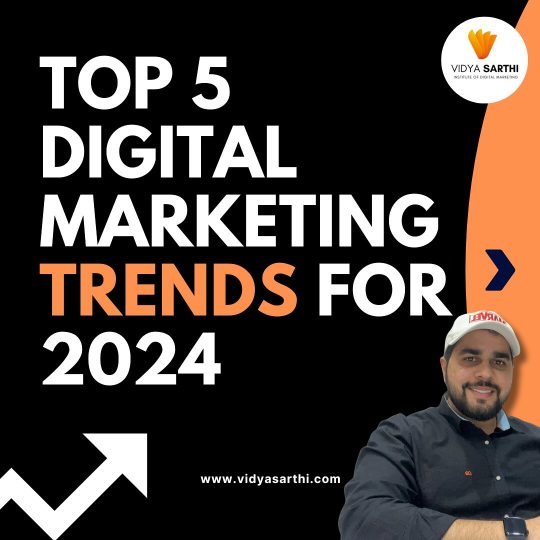
0 notes